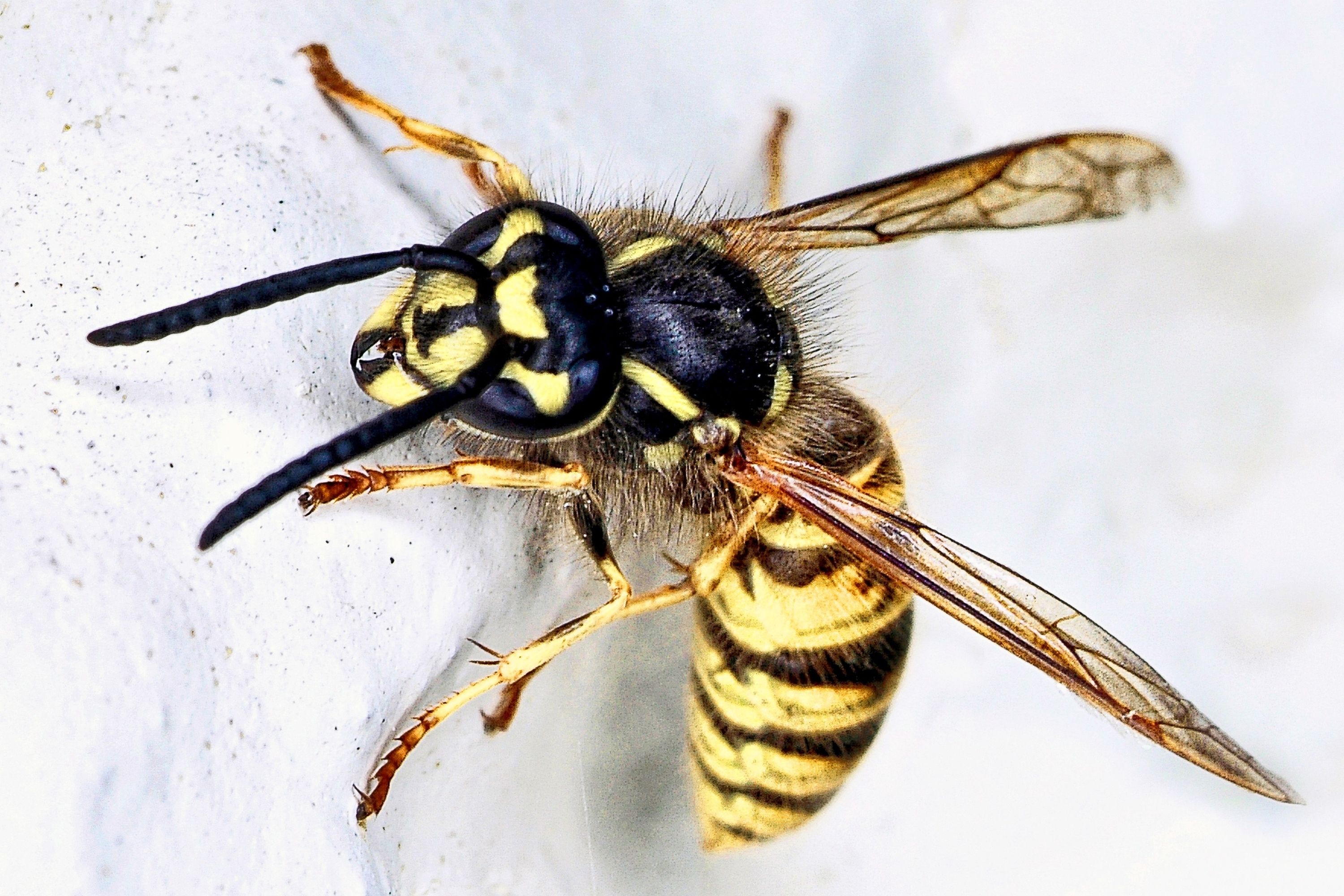Executioner wasp
(Polistes carnifex)

Description
Polistes carnifex, commonly known as the executioner wasp, is a neotropical vespid wasp in the cosmopolitan genus Polistes, known for its extremely painful and potent sting. It is a very large yellow and brown paper wasp with a mandible that contains teeth. It establishes small colonies, founded by solitary queens, which build nests under the eaves of buildings or suspended from branches. Foraging adults bring nectar and macerated prey back to the nest to feed to the developing larvae which are individually housed in separate cells in the nest. Polistes carnifex is the largest Neotropical wasp in the genus Polistes with a body length up to three centimetres. The normal size is 24-27mm, with a possible maximum of 33mm. Despite its size, it is a relatively non-aggressive insect. It is colored yellow with some brown stripes, these are partially blackish. The antennae are yellow with a darkened base. The head is yellow, the crown of the head being black and ending with reddish-brown stripes. The maxillae are reddish-brown, outlined in black. The thorax is yellow, the dorsal part black, but with a quartet of dark reddish-brown spots. The pronotum is totally or almost totally colored yellow. The abdomen is yellow, the second segment (tergite) darkened at the base. The wings are reddish-brown, or yellowish reddish-brown, and the feet are dark-colored. It can be grouped with a number of species which can be distinguished from other species within the genus Polistes by their lacking of a groove on the underside of its head called the epicnemial sulcus. P. carnifex can be distinguished among this group of wasps by its wide cheek plates. Also the first tergite is very compact, dorsally convex, and elevated vertically compared to the constriction where the abdomen is inserted into the thorax. Furthermore, the eyes do not touch the clypeus. Lastly, this is a very large wasp, with individuals always longer than 20mm. The first gastral segment (sternite) is less broad than long. Ducke states that the nests, with their relatively long and strong central petiole, are characteristic for the species, at least among the species in the genus of which the nest was known in his time. P. carnifex ssp. rufipennis appears to differ from the nominate type by the body and wings being colored a tan brown, almost chestnut. Latreille describes it as such, with the antennas and the last quarter of the tarsi being more yellowish.
Taxonomic tree:







